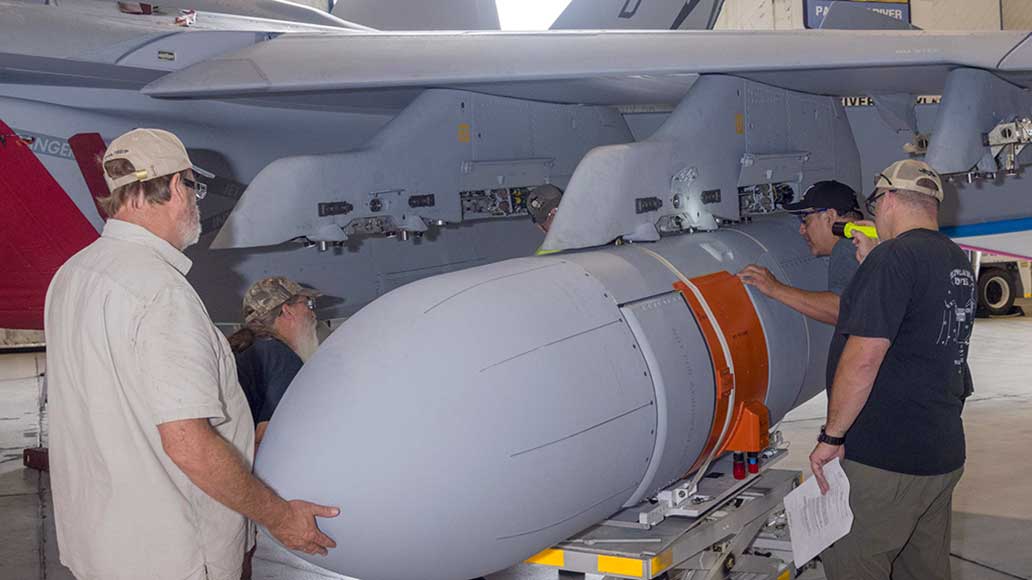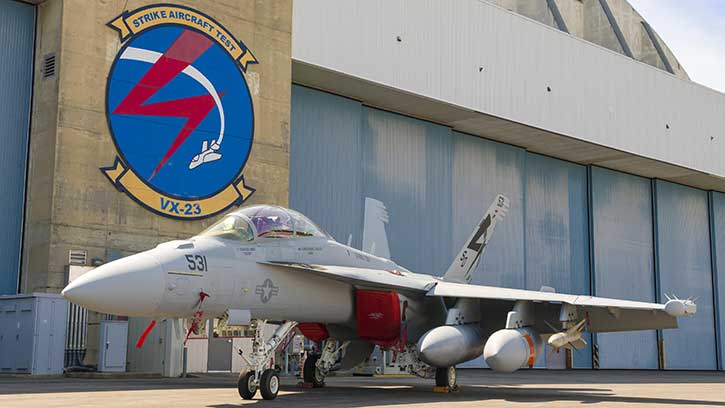The U.S. Navy recently completed a portion of developmental testing of the Next Generation Jammer Mid-Band (NGJ-MB) electronic warfare (EW) pod. The program will enter flight testing at the Air Test and Evaluation Squadron (VX) 23 by late June or early July 2020. The program’s Milestone C is projected for the end of this fiscal year and is expected to become operational in 2023.
“NGJ-LB is the next step in the evolution of Airborne Electronic Attack that is needed to meet current and emerging electronic warfare gaps, and our team is dedicated to delivering this capability to the fleet as quickly as possible,” said Capt. Michael Orr, Airborne Electronic Attack Systems (PMA-234) program manager. Orr spoke today on the EMS Summit, a virtual event conducted by the AOC.
NGJ-LB is part of a larger NGJ weapon system that will augment, and ultimately replace the legacy ALQ-99 Tactical Jamming System (TJS) currently used for Airborne Electronic Attack on the EA-18G Growler aircraft. Unlike most capabilities that instantly replace its predecessor, the NGJ-MB systems will initially augment the legacy ALQ-99 Tactical Jamming System until the low- and high-band components are ready to deploy.

The NGJ-MB system consists of two pods, referred to as a shipset, which will be loaded onto EA-18G Growler aircraft. Production pods to be delivered to the US Navy and the Australian Air Force are expected to achieve initial operational capability in 2023. The system will provide significantly improved Airborne Electronic Attack (AEA) capabilities against advanced threats in the mid-band frequency range through enhanced agility and precision within jamming assignments, increased interoperability, and expanded broadband capacity for greater threat coverage against a wide variety of radio frequency emitters.
NGJ-MB Engineering Development Model (EDM) pods developed by the Raytheon Company in El Segundo, California completed more than 400 test hours on this ground testing phase, covering basic functionality, Electromagnetic Environmental Effects (E3) data collection, and performance evaluation over a period of three months.
“This chamber test period was instrumental to the NGJ-MB Developmental Test program, and its success was the direct result of outstanding teamwork among the Program Office, Integrated Test Team, and Raytheon stakeholders,” said Orr. “Data captured during this period not only supports our initial flight clearance but also provided lessons learned that will benefit the entire NGJ-MB test program moving forward.”
Some of the tests were performed in the Air Combat Environmental Test and Evaluation Facility anechoic chamber at Naval Air Station Patuxent River, Maryland. More tests will be done at the Air Combat Environmental Test and Evaluation Facility and the Facility for Antenna and RCS Measurement (FARM) through this summer. The 20-month DET contract has been a collaborative effort with industry partners to assess technical maturity.

from Defense Update: https://ift.tt/2XdosS7
via Defense News
No comments: